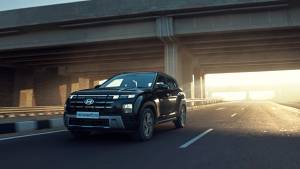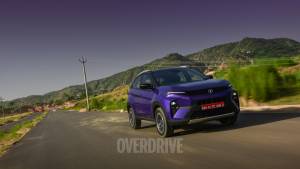2020 Hyundai i20 first drive review
A quick drive in the new fourth-generation Hyundai i20 tells you much. It shows just how far Hyundai has come as a car maker. It also shows how far the much humbler Getz, the first generation premium hatchback has come since it was first introduced in 2004. The new i20's styling is bold, the engines small but powerful, the technology packed in up to the window sills, is as contemporary as it 'Getz' and the features nothing short of generous. We've been getting glimpses of the new i20 for several months now, and a walkaround last month revealed several new details. Here is finally what it feels like to be driven.
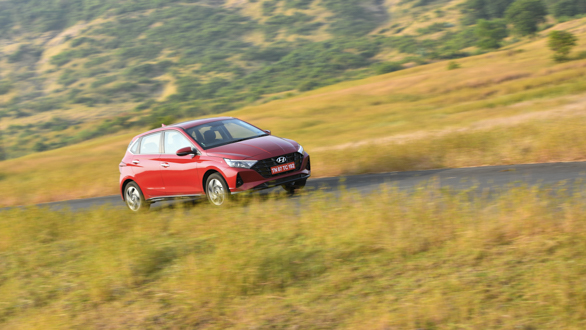
Hyundai i20 platform
The new i20 sits on an all new monocoque platform, called the K platform. This is a new lightweight structure, that has a lower kerb weight than the previous generation i20. At the same time tensile strength has gone up by 13 per cent by using more advanced high strength steel, 36 per cent more than before. This results in a 66 per cent stronger and thus a safer crash structure, while at the same time enhancing fuel efficiency by being lighter as well.
The body shape also has a lower coefficient of drag, the Cd value stands at 0.33 one of the lowest in the segment. The smoother airflow is one more step in improving fuel efficiency.
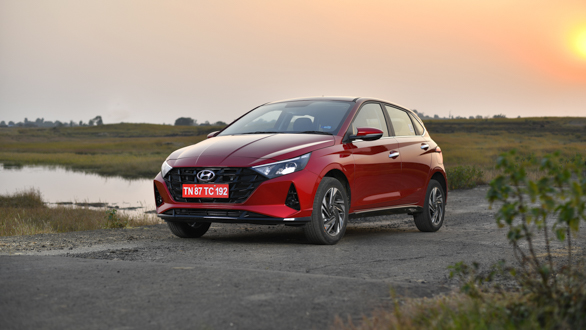
The dimensions of the new body structure have also grown. Overall length has increased by 10mm to 3,995mm. Overall width has increased by 41mm to 1,775mm, though height stays the same as the previous generation hatch at 1,505mm. The wheels are also placed further apart, wheelbase has gone up by 10mm to 2,580mm whereas there is a 30mm increase in track width. All of this has a significant positive impact on interior space with shoulder room increasing majorly and as well as driving stability.
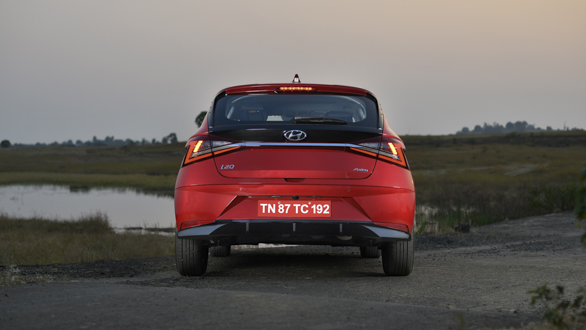
Brakes utilise a combination of discs and drums front and back respectively. And adding a large safety net are the six airbags, electronic stability control (ESC), vehicle stability management (VSM) and emergency stop signal (ESS) that switches on the hazard lamps under hard braking.
Hyundai i20 ride and handling
I'm going to ignore the styling and get straight to the handling because this is without a doubt what caught my attention the most. Who ever talks about handling and Hyundai in the same breath? For years it has been an area ignored by both Hyundai and its consumers. You looked at Hyundai as the forebearer of affordable technology and features, that you only accessed in large premium cars. Surprisingly, here is a car that steers attention away from the gear and gadgets to a more engineered character.
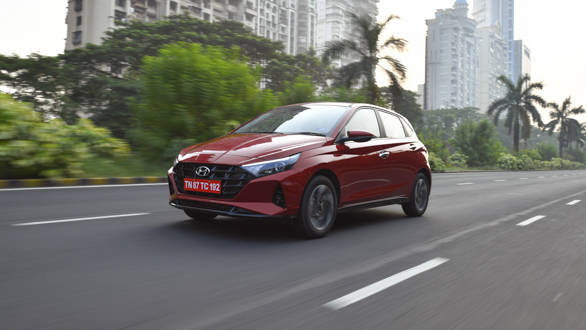
The new i20's suspension setup on paper is a kind of regular, run-of-the-mill setup. MacPhersons at the front and a coupled torsion beam at the rear with gas-charged shock absorbers continuing from the previous-gen car. Not revolutionary, and certainly not something that should stir up anyone's interest. This sort of setup however has several benefits, with fewer shortcomings especially for smaller cars. The principal benefit being keeping the cost low. The second benefit that also matters equally is that you get the closest feel to a multi-link suspension at a more affordable price point. Then there is durability, reliability, and more. But all that aside what I do like is just how minutely the suspension system has been tuned. Lots of fettling later, what the new i20 gets is probably the finest ride and handling character in the segment, I'd wager this is just that tiny bit better than the benchmark car for handling in this segment, the Volkswagen Polo. The ride is firm, with just enough give in it to provide a comforting level of cushiness. It's all very tightly controlled, with little body roll to upset its line and it's all down to that suspension tuning.
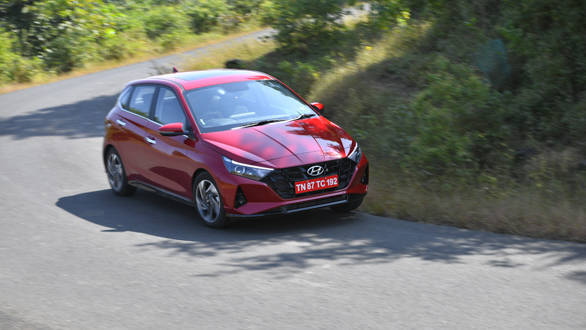
Aiding the stability and improved control is an increase in the dimensions of the i20. Both wheelbase and track have got longer to provide a larger more stable footprint on the ground. While wheelbase has increased by 10mm, the track has gotten wider by almost 30mm! Even the tyres on the Asta variant I drove are 195/55 16-inchers which play a trio of roles - it smoothly balances out better tractability, stability and there is just enough damping to provide adequate ride comfort.
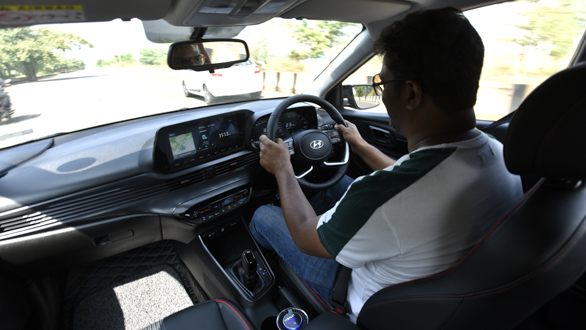
But all this is moot if you can't precisely place the i20 where you want it to be and this is where the tweaks to the electric power steering come in. It's quick to turn, and every move from the steering is supported by the tyres that cling to tarmac with a vice-like grip. There isn't much feedback, like any electrically-assisted system it's a bit deadpan, the electronics and the quick motors compensate any twitches to the wheel so you don't really get much feedback at the wheel. But the precision is there and so is the necessary weight. It's light in urban driving conditions, and weighs up nicely as you dial in more throttle. Turning radius for the new i20 has also dropped down to 5.12 metres from 5.23 metres compared to the older i20.
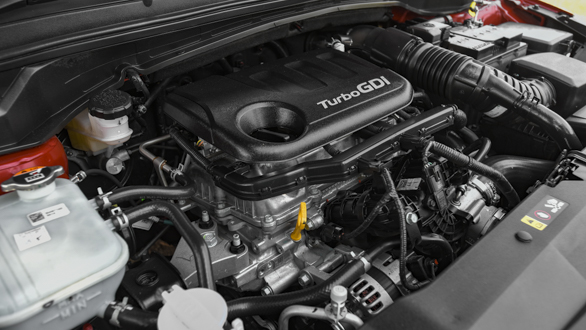
Hyundai i20 engine and performance
I've sampled the new 1.0-litre turbo petrol motor (T-GDi) mated to the 7-speed dual clutch transmission, and to me that's the second highlight of the new i20. This isn't an all new powertrain, Hyundai first placed this 3-cylinder Kappa II turbo petrol motor in the Venue compact SUV, and followed that up with the Aura, Grand i10 Nios, the Verna, and now it has been positioned in the i20. It is available in two states of tune, one churning out 100PS, and like in the case of the new i20, a 120PS, making it the most powerful hatchback in the segment, as of now. And it shows, acceleration is brisk past 1,800rpm and leads up to a manufacturer claimed 9.9 seconds to 100kmph. At under 1,800 revs, the variable geometry turbo does not give you the sense of urgency you would want from a 120PS-generating engine. The turbo kicks in around 1,800rpm, and it then picks up pace rapidly, but before that you're left wanting a bit of a push!
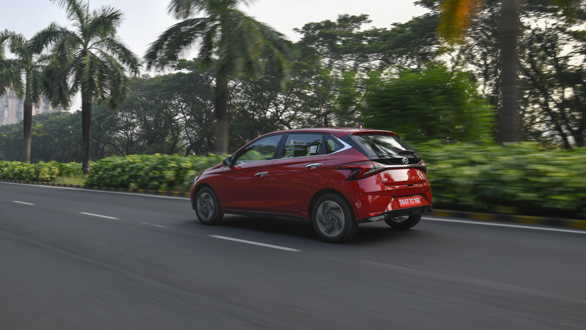
Once past the 1,800rpm mark though, and the new i20 is wonderfully quick, with the gearing tuned to take it well past a 160kmph with ease, at least that is as much as I saw before backing off the throttle for lack of room. I just didn't have the space to test the top speed, but I'm guessing this tiny motor could take the new i20 to a 180kmph if not further. The dual clutch transmission is also quick to respond to the engine revs, and it shifts up or down quickly and smoothly. For a bit more spirited experience, simply slide it into manual mode to work the gars the way you want. I only wish Hyundai offered paddle shifters with this variant.
Hyundai i20 features
What would a Hyundai be, if not packed with features? An exhaustive feature list, with many class leading and premium ones has been the wind in Hyundai's sails for well over a decade. Topping the list is the new 10.23-inch HD touch screen that sits above the dashboard. The new i20 also offers the latest iteration of BlueLink, Hyundai's proprietary connected technology that adds some 50 new features and a 3-year subscription as part of the package. Explore these at leisure. You also get an air filtration system that maintains the AQI inside your car. Wireless charging, voice command operations, tilt and telescopic adjustable steering, a smart watch and a Bose sound system are a few more key highlights in the feature list depending on the variant.
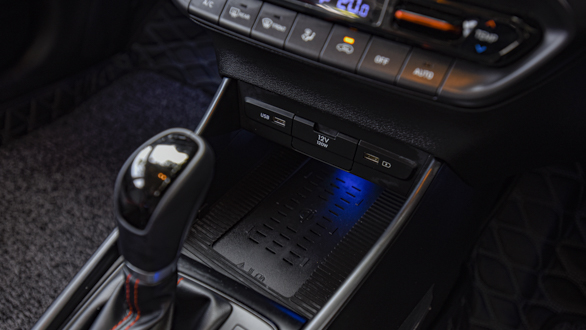
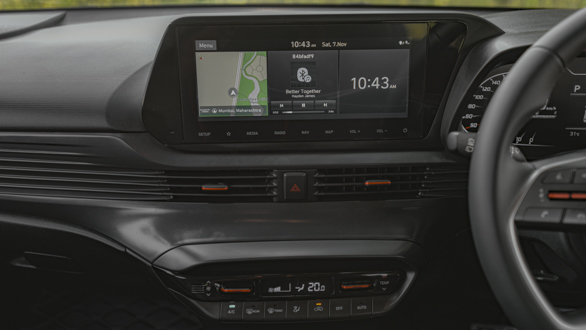
Hyundai i20 styling
I've kept the design and styling bit of the new i20 for last because that is an area I believe will divide opinions and definitely draw parallels to the design of the previous generation car. I, personally, am quite fond of the previous generation hatchback, which despite its straighter lines and more upright hood looked, in my opinion, more handsome. I'm not too fond of the new i20 and the way it looks, though it does have some very strong styling elements. The wrap around headlamps, the glossy mirror finished grille, the rear lamps, the 16-inch alloys, these are all very stylish bits and lend the new i20 with a premium look and feel. I just don't like the way it all sits together, and the cab-forward stance with that swooping downwards hood is my least favourite element on the new i20. I also think the large hexagonal grille with those headlamps extending from the edges of the grille would sit better with a lower front bumper and side skirts.
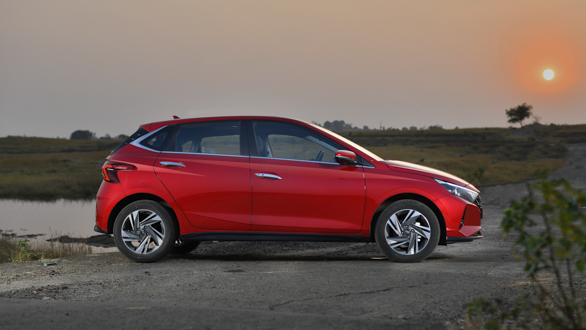
Even at the rear it's a very busy area, and while the chrome strip connecting the Z-patterned rear taillamps east to west is premium there is a lot going on in that area to sink in.
Hyundai i20 interiors
Even on the inside, there are certain elements that deserve top billing, but then are also let down by a few elements. The touchscreen sitting on top of the dashboard gives the interior immense swag. But the ribbed dashboard effect looks much better in images than in the flesh. It certainly makes the cabin look wider, but the quality of materials could have certainly been better, especially the quality of the plastic blow the ribbing. The red accents on the Turbo variant I drove add a touch of class, they are subtle hints at the power the new i20 envelops without being garish or ostentatious. The steering wheel also feels chunky to grip though the quality of the buttons on it could have been better, and why did Hyundai not add a flat bottomed steering wheel to spice up that sporty flavour?
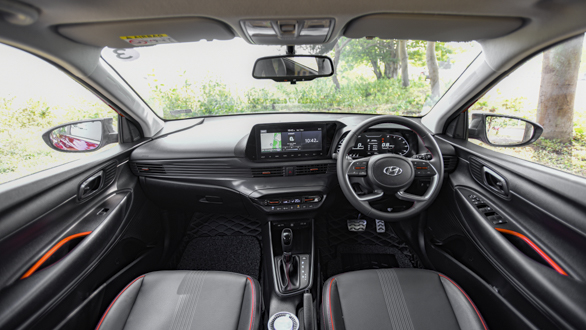
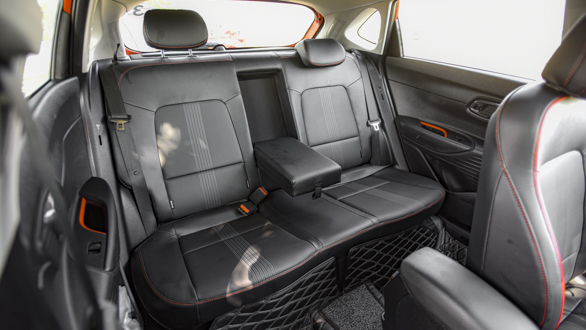
Some of the better, but I'm sure ignored elements, will be the thick edges at the window sill near the A-pillar which flows fluidly into the windscreen area. It makes the car feel more European. Visibility is top notch from that large windscreen and the A-pillar does not impede vision. The seats are also well cushioned and supportive though I'd appreciate it having adjustable lumbar support and ventilation would have added significantly more value. On the space front too, the new i20 increases in interior roominess, principally adding more shoulder and knee room to enhance passenger comfort. The rear bench is also expansive with good under thigh support and a backrest that is sufficiently raked to provide adequate support and comfort over long distances.
Hyundai i20 first impressions
The all-new i20 elevates the premium hatchback proposition that was kickstarted by Hyundai in India eons ago. It is a remarkably better car than ever before and now that it has received the fantastic array of new engines and transmissions, upgraded its chassis, added a plethora of new features, it promises to bring a whole lot more value and pleasure to prospective customers. The pricing is quite attractive too (for certain variants), though the Rs 11.17 lakh sticker price on the 1.0-litre turbo petrol DCT for the Asta Option variant is fairly steep. You could choose the slightly lesser equipped Asta variant, you'd lose some safety features like the 6-airbags and ISOFIX points, though not much else.
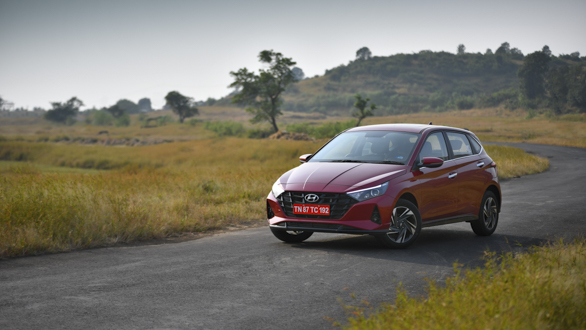
Photography: Anis Shaikh
The writer of this story can be reached @BertrandGDsouza on Twitter and @bertdsouza14 on Instagram
Watch our video review of the 2020 Hyundai i20 below
Starts Rs 6.8 Lakhs
1493cc
Manual
83
241
-NA-
Starts Rs 6.17 Lakhs
999cc
Automatic
76
175
16.47 Kmpl

